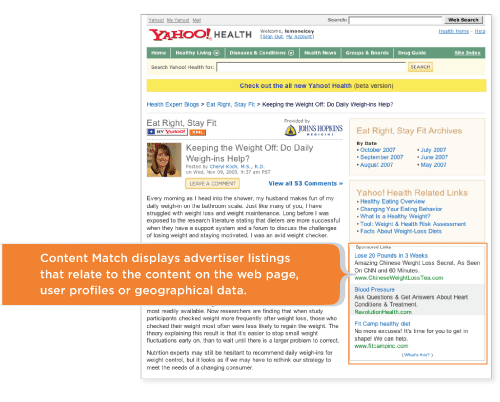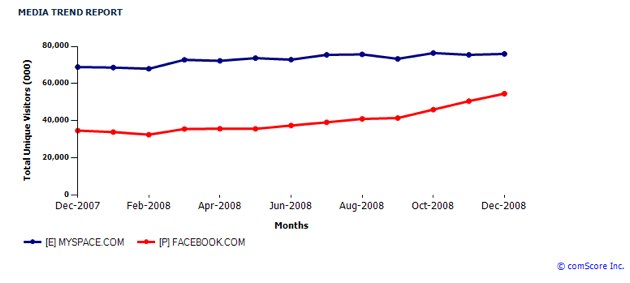Social media resumes are important for attracting hiring managers directly to you, without you having to submit your resume, blindly, to them. The problem with submitting your resume online to job postings is that most job postings aren’t even vacant, might not exist, and 80% of jobs offers are received through networking.
With a social media resume, you’re able to paint a completely different portrait of yourself for hiring managers and customize it to reflect your personal brand. With the inclusion of various multimedia elements, sharing options, integrated social networking feeds and the same elements you’d find in a traditional resume, you are better equipped for success.
Social media has allowed us to reverse the recruiting process. Instead of submitting our resume, it becomes a billboard that can be shared, distributed to hiring managers, searched and more. In one sense it showcases your talents and what you’re looking for in a job and in the other, recruiters become attracted to it and will approach you with the opportunities that you desire.
Here is the social media resume process:
1. Start with a website
Depending on who you are, how much time you have, how you deal with criticism and your technological competency, you’ll either want to start a website or a blog. With both, there are free and easy to use services out there, as well as services that cost money and require experience.
Options for websites
Free: Bravenet.com is a free solution with many different tools, such as a polling feature and guest book to help you get started. They’ve been around since I started building web pages in middle school.
Paid: I recommend you use Bluehost or Godaddy to host and build your website. You can also use Microsoft Expression Web, which is an easy to use website building software program, much like using Microsoft Word to build your website.
Options for blogs

Free: I recommend Wordpress.com or Google Blogger. Both are easy to use and don’t require much web knowledge. I would touch up your skills in HMTL before even getting involved with a blog. There are various sites such as W3 Schools that can serve as tutorials for you.
Paid: I recommend loading Wordpress.org into Bluehost. I just went through this process and Godaddy can’t comply, but Bluehost is easy to work with and understands how to install Wordpress blogs onto their hosts. Another option is using Typepad.com, which costs money and is great for the beginner blogger.
2. Your URL is key
Depending on your strategy, your URL is going to be extremely important. Of course I would recommend that you purchase your domain name, yourname.com. If that isn’t available, try for yournameRESUME.com or the .net or .org equivalents, in that order.
The objective of the URL is to have something you can freely promote and that people can remember.
- Use the URL on your paper resume.
- Use the URL on all of your social networks.
- Use the URL on your business cards and any other marketing materials.
You can get free domain names when you sign up for Bluehost, Godaddy and others. They typically come in a package with the hosting space.
3. Decide on the format and design
 Depending on what job you’re looking for, you’ll want to change the blog/website format accordingly. I think it makes a lot of sense to take your paper resume and break it apart into its different sections. Once you do this, you can have separate tabs and pages for each, so it’s easy to crawl, navigate and makes a lot of sense to the recruiter.
Depending on what job you’re looking for, you’ll want to change the blog/website format accordingly. I think it makes a lot of sense to take your paper resume and break it apart into its different sections. Once you do this, you can have separate tabs and pages for each, so it’s easy to crawl, navigate and makes a lot of sense to the recruiter.
Remember that recruiters are looking for specific things on your website that would appear on a resume anyways. Below, I’ve included various sections that you can use when constructing your website or blog frame:
Press/media, contact, career highlights, distinctions, bio, blog, case studies, about, skills, experience, credentials, intro, consulting, vision, endorsements, resume, newsletters, news & events, volunteer projects, strengths, social networks, interact, demo real, art portfolio, sample projects, personal information, professional information, wiki, speaking events, awards, profile, photos, videos, associations, clubs, technical competencies.
Depending on how you want to brand yourself, you’ll want to design your blog accordingly. Using a color wheel to choose colors that match is very important, especially if you aren’t a graphic designer or artist. Remember to use a consistent font, headings and colors, while keeping your frame/format intact.
4. Enhance your resume with multimedia
 Traditional resumes can’t include multimedia because they are on paper. Multimedia makes your website/blog much more interesting and interactive. It allows you to emotionally connect with recruiters and all other observers. It also puts a resume to a face and is another great method for people to consume your content.
Traditional resumes can’t include multimedia because they are on paper. Multimedia makes your website/blog much more interesting and interactive. It allows you to emotionally connect with recruiters and all other observers. It also puts a resume to a face and is another great method for people to consume your content.
- A video or MP3 of you answering basic interview questions.
- Video of a talk or seminar you recently conducted.
- Photos of you meeting industry celebrities or business people.
- Audio testimonials from previous clients and coworkers.
- A podcast you’ve started.
Out of everything, I think a basic introduction to the brand called you is the most valuable for the observer. I would give a thirty second pitch for why someone should hire you. Depending on the company you’re targeting, you’ll want to dress formally or informally. Don’t act like you’re reading from a card and try to have a natural sounding voice. You can upload your video or audio to sharing sites, such as Vimeo or YouTube and then embed them on your website or blog. This typically works the best because then the video can have movement, going from one hiring manager to the next.
5. Integrate your social network profiles
Before you think of even linking to any of your social networks in your webpage or blog, please consider how the profiles would appear to recruiters. For instance, if you want to highlight your Facebook profile, ensure that it doesn’t have profanity or explicit pictures on it first. You should review your wall postings, picture, profile information and more to see if it would be appropriate for hiring managers.
If your Facebook profile passes your examination, then feel free to build a profile badge that you can embed on your website.
Other social networks you may want to crosslink with:
LinkedIn: Your professional profile on this social network is extremely important because it takes into account everything a recruiter would desire from an applicant: cover letter, references list and resume. You can use a LinkedIn badge on your website or blog as well.
Twitter: Your Twitter stream can be a huge asset to you on your social media resume because it’s easy to update and recruiters can get a better feeling about who you are from reading it. There are Twitter badges you can include on your site as well.
YouTube: Storing your videos on YouTube makes a lot of sense because it’s easy to embed on your site, organize your videos into playlists and you can even have your own YouTube channel widget.
This is important if you want potential clients and employers to get a feel of what your personality and work ethic is like. The most important thing is to use social networks that people are most familiar with, such as the ones above and to keep them all fresh and updated. They HAVE TO best represent your personal brand to be included on your social media resume.
6. Make your resume shareable
 You won’t find many recruiters that are going to share your resume. They will choose not to if you’re the candidate they want because it would attract too many other recruiters, thus giving you more bargaining power and options. They see no value in sharing your resume whatsoever, but that doesn’t mean you shouldn’t showcase your proficiency with technology with sharing features. Also, your resume will be seen by more than just recruiters and if it is shared on social networks, the chances that you’ll have more job opportunities increases. Visibility creates opportunities.
You won’t find many recruiters that are going to share your resume. They will choose not to if you’re the candidate they want because it would attract too many other recruiters, thus giving you more bargaining power and options. They see no value in sharing your resume whatsoever, but that doesn’t mean you shouldn’t showcase your proficiency with technology with sharing features. Also, your resume will be seen by more than just recruiters and if it is shared on social networks, the chances that you’ll have more job opportunities increases. Visibility creates opportunities.
Instead of worrying about how to embed Delicious, Digg, Reddit and Stumbleupon, try and use sharing utilities that combine all of them and much more. The top three are Share This, Add to Any and Add This. Embed these onto your social media resume in one of the top corners.
For examples of social media resumes, please see mine, Chris Penn’s, Bryan Person’s, Katharine Hansen’s and Rohit Bhargava’s. Good luck with your social media resume. If you do it right, you’ll never have to apply for another job again!







 Video Usability
Video Usability


 Depending on what job you’re looking for, you’ll want to change the blog/website format accordingly. I think it makes a lot of sense to take your paper resume and break it apart into its different sections. Once you do this, you can have separate tabs and pages for each, so it’s easy to crawl, navigate and makes a lot of sense to the recruiter.
Depending on what job you’re looking for, you’ll want to change the blog/website format accordingly. I think it makes a lot of sense to take your paper resume and break it apart into its different sections. Once you do this, you can have separate tabs and pages for each, so it’s easy to crawl, navigate and makes a lot of sense to the recruiter.  Traditional resumes can’t include multimedia because they are on paper. Multimedia makes your website/blog much more interesting and interactive. It allows you to emotionally connect with recruiters and all other observers. It also puts a resume to a face and is another great method for people to consume your content.
Traditional resumes can’t include multimedia because they are on paper. Multimedia makes your website/blog much more interesting and interactive. It allows you to emotionally connect with recruiters and all other observers. It also puts a resume to a face and is another great method for people to consume your content. You won’t find many recruiters that are going to share your resume. They will choose not to if you’re the candidate they want because it would attract too many other recruiters, thus giving you more bargaining power and options. They see no value in sharing your resume whatsoever, but that doesn’t mean you shouldn’t showcase your proficiency with technology with sharing features. Also, your resume will be seen by more than just recruiters and if it is shared on social networks, the chances that you’ll have more job opportunities increases. Visibility creates opportunities.
You won’t find many recruiters that are going to share your resume. They will choose not to if you’re the candidate they want because it would attract too many other recruiters, thus giving you more bargaining power and options. They see no value in sharing your resume whatsoever, but that doesn’t mean you shouldn’t showcase your proficiency with technology with sharing features. Also, your resume will be seen by more than just recruiters and if it is shared on social networks, the chances that you’ll have more job opportunities increases. Visibility creates opportunities.
















